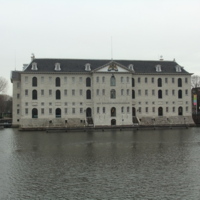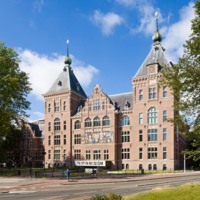
Het Scheepvaartmuseum
Het Scheepvaartmuseum is the National Maritime Museum of the Netherlands. Housed in a seventeenth-century naval storehouse, the museum showcases the ways in which Dutch culture has been influenced by the sea. A vast array of collections, including paintings, maps, maritime instruments and weapons illustrate these stories. Just outside the museum, there is a replica of an eighteenth century ship, the Amsterdam, which once sailed between the Netherlands and the Dutch East Indies. With fifteen permanent exhibitions and a free audio tour, the museum's four million annual visitors are exposed to over five hundred years of both Dutch, and world, history.
Dutch involvement in slave trading is highlighted in the 'See you in the Golden Age' exhibition. The interpretation here focusses on the seventeenth century, a time when the Netherlands was one of the most economically and culturally rich countries in the world. While the exhibition reflects this boom period through a variety of collections, it also illustrates the darker side of Dutch prosperity. By making use of contemporary narratives, the museum provides its visitors a chance 'meet' historical characters including Amimba, a young African girl who was forced into slavery.

Tropenmuseum of World Cultures
The Tropenmuseum of World Cultures (direct translation; Museum of the Tropics) is an ethnographic museum, founded in 1864. Housed in one of the 'most impressive buildings in Amsterdam', the museum features eight permanent exhibitions and a series of temporary exhibitions. The key theme of the museum is people, with all of the exhibitions making use of the museum's vast collections of over 150,000 objects, paintings and photographs, to showcase universal human themes, including celebration, mourning and conflict.
In the 'Afterlives of Slavery' exhibition, visitors are confronted with the legacies of slavery and colonialism in contemporary Dutch society. Developed in collaboration with scientists, artists and activists, the exhibition tells the history of slavery with the experiences of the enslaved, and their descendants, at its heart. Video portraits provide the perspectives of four key figures in the contemporary debates about colonial legacies for Dutch black people.
The key link between past and present here is the continuation of inequality and prejudice. Collections, both historic and contemporary, highlight this, as well as illustrating how times have changed. These include testamonies of enslaved people, books, portraits, 'relics of slavery' and examples of African art.